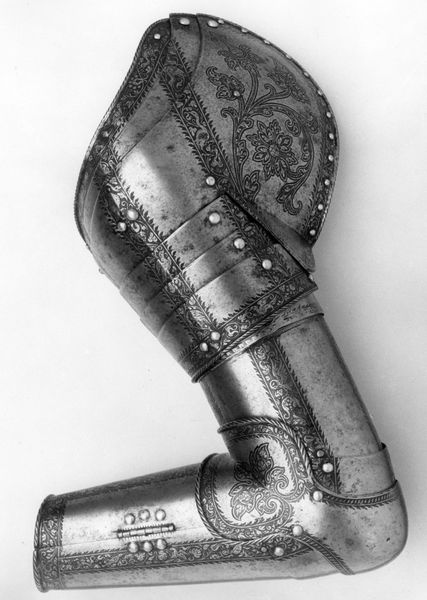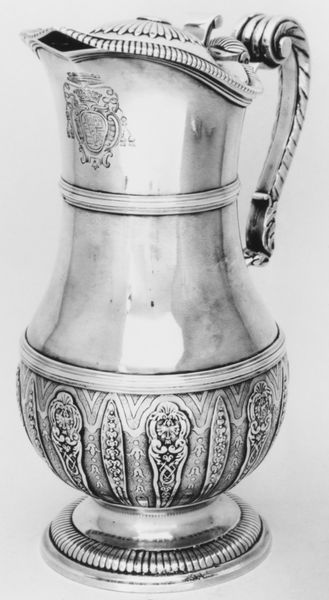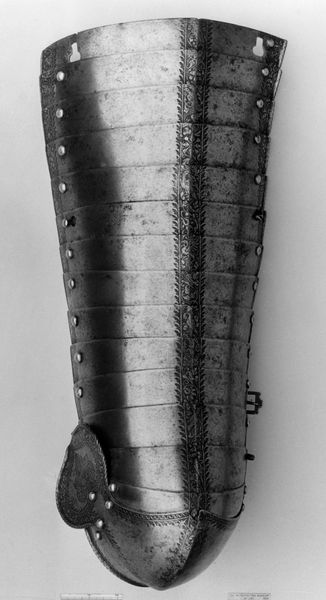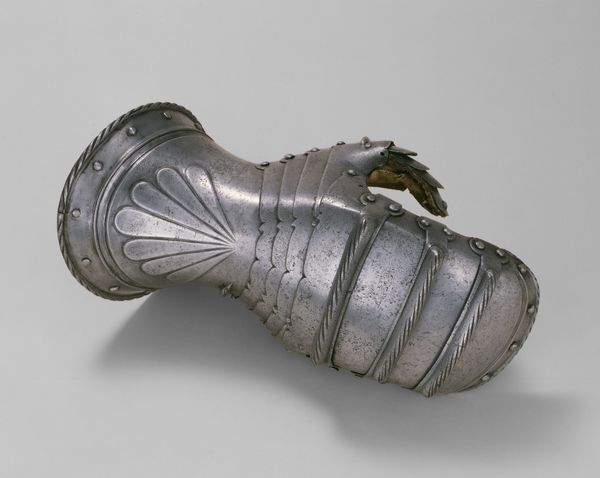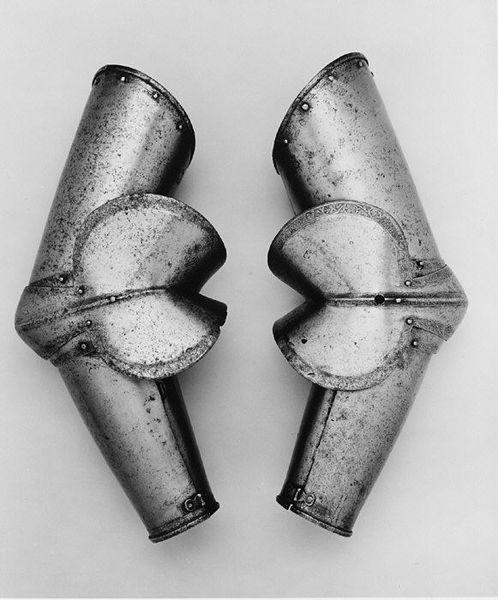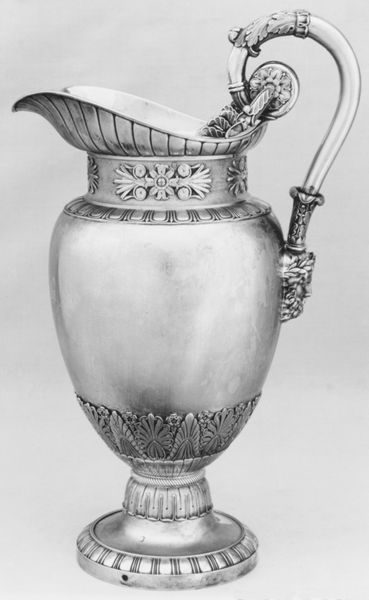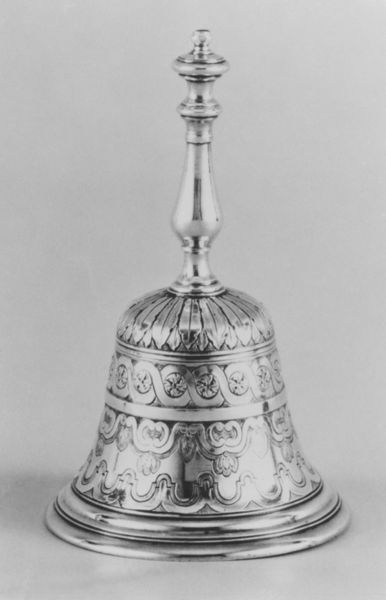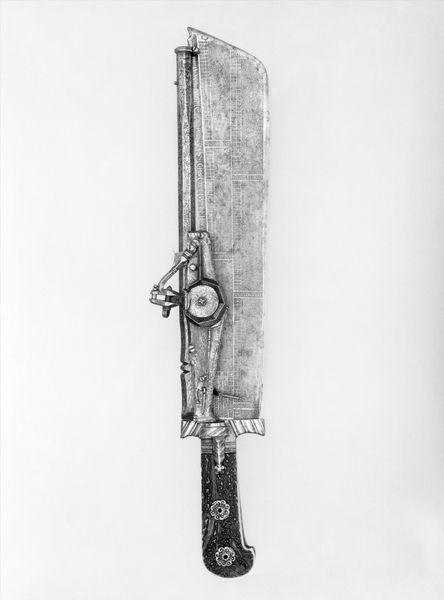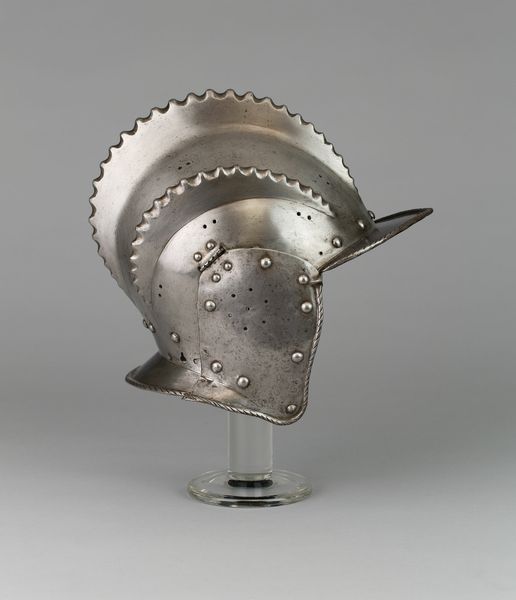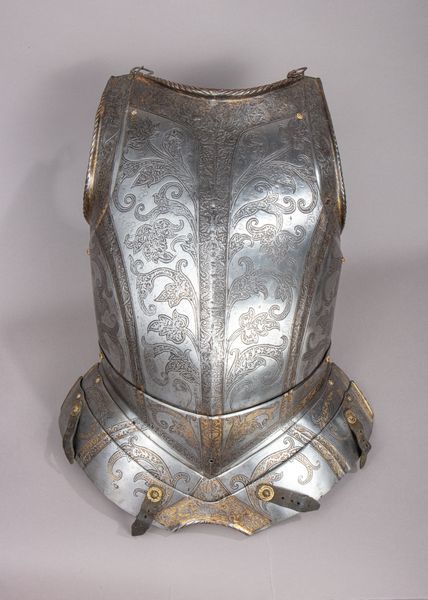
metal, bronze, sculpture
#
medieval
#
metal
#
sculpture
#
bronze
#
figuration
#
11_renaissance
#
sculpture
#
history-painting
#
armor
#
arm
Dimensions: right shoulder and arm defense (32.109.1a, b): H. approx. 28 in. (71.1 cm); W. approx. 10 in. (25.4 cm); Wt. 5 lb. 9 oz. (2523.1 g); left shoulder and arm defense (32.109.2a, b): L. approx. 28 in. (71.1 cm); W. approx. 10 in. (25.4 cm); Wt. 5 lb. 6 oz. (2438.1 g); right thigh and knee defense (32.109.3a–c): L. 20 in. (50.8 cm); W. 8 1/2 in. (21.6 cm); Wt. 3 lb. 3 oz. (1445.8 g); falling buffe (32.109.4): H. 7 1/2 in. (19.1 cm); W. 6 1/2 in. (16.5 cm); Wt. 1 lb. 1 oz. (481.9 g); waist lame (32.109.5): H. 2 1/2 in. (6.35 cm); W. 13 in. (33.0 cm); Wt. 5 oz. (141.7 g); waist lame (32.109.6): H. 2 1/2 in. (6.4 cm); W. 13 in. (33 cm); Wt. 3 oz. (85 g)
Copyright: Public Domain
These elements of armor garniture were made by Wolfgang Grosschedel in the mid-16th century. They're primarily constructed from steel, a material renowned for its strength and malleability. The surfaces were meticulously shaped, likely through hammering and forging techniques, requiring immense skill and physical labor. Look closely, and you'll see the etched decorations of intricate floral motifs and geometric patterns. These were achieved by applying acid to bite into the metal, a complex process demanding precision and artistry. These motifs elevated the functional armor to a symbol of status. The production of such armor involved a collaborative effort, with various artisans contributing their expertise, reflecting a complex division of labor. In its time, this was as much a feat of engineering as it was of artistry. The armor represents the wealth and power of its owner and the skill of the artisans who created it. Considering the material and the making, we understand that this armor transcends mere protection; it embodies a convergence of craft, design, and social significance, blurring the lines between fine art and functional object.
Comments
No comments
Be the first to comment and join the conversation on the ultimate creative platform.
